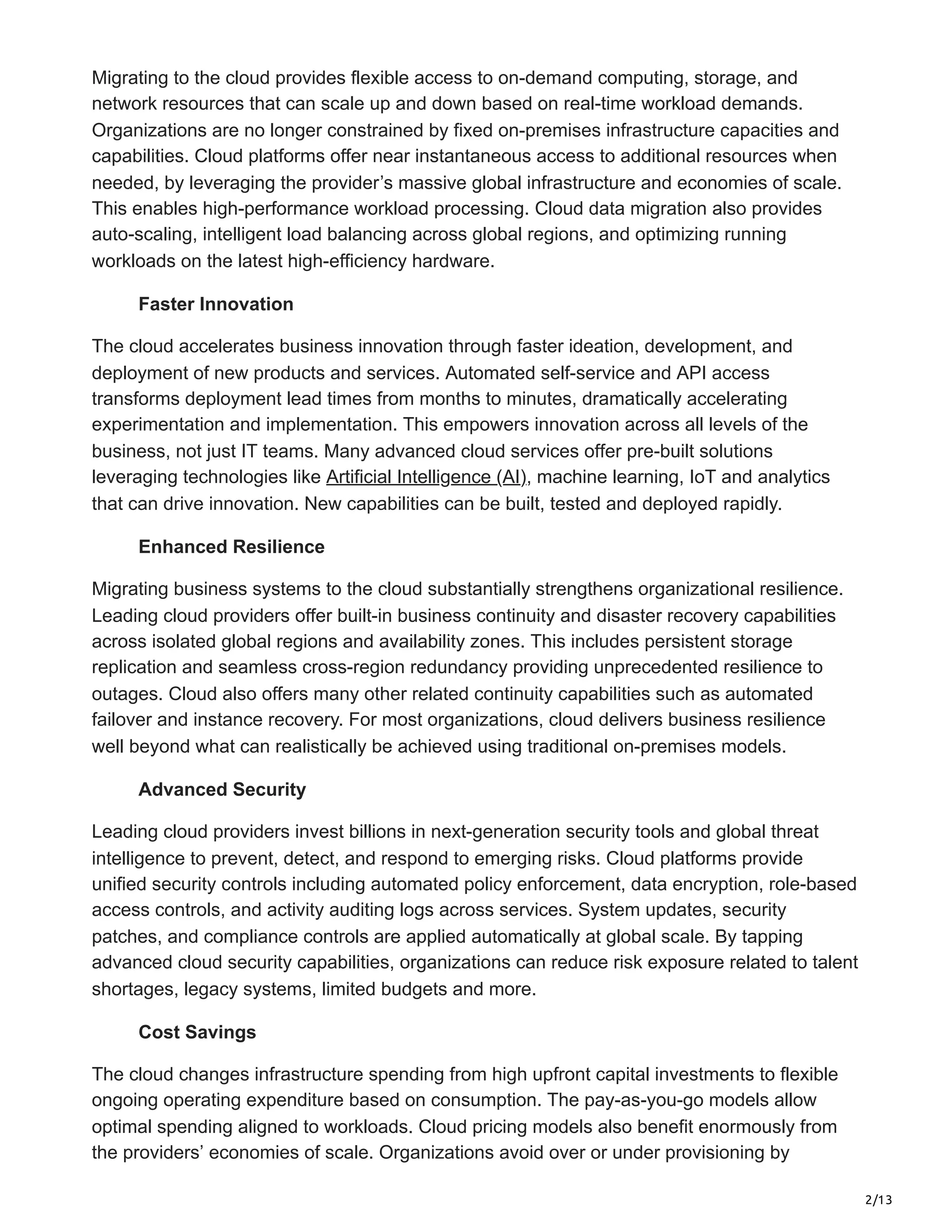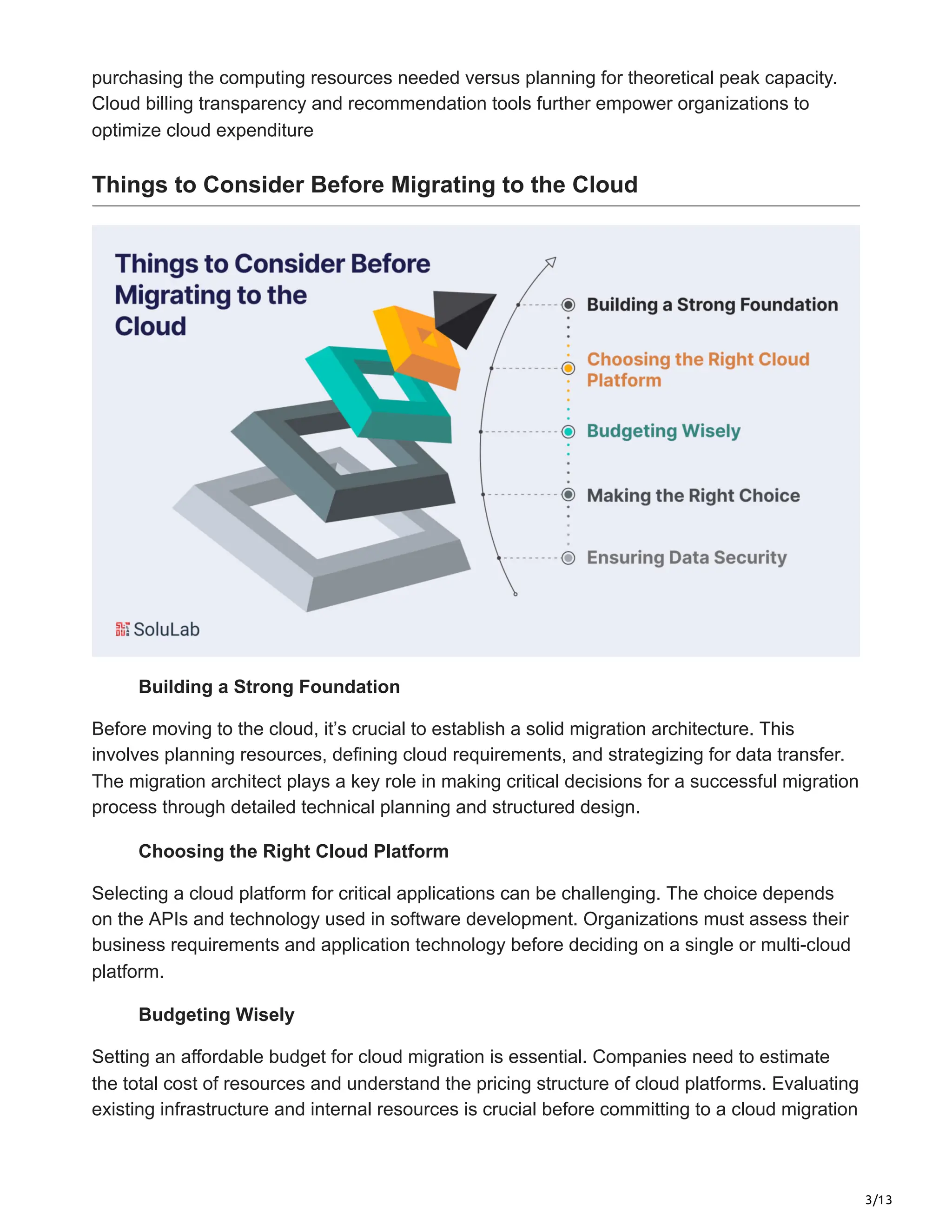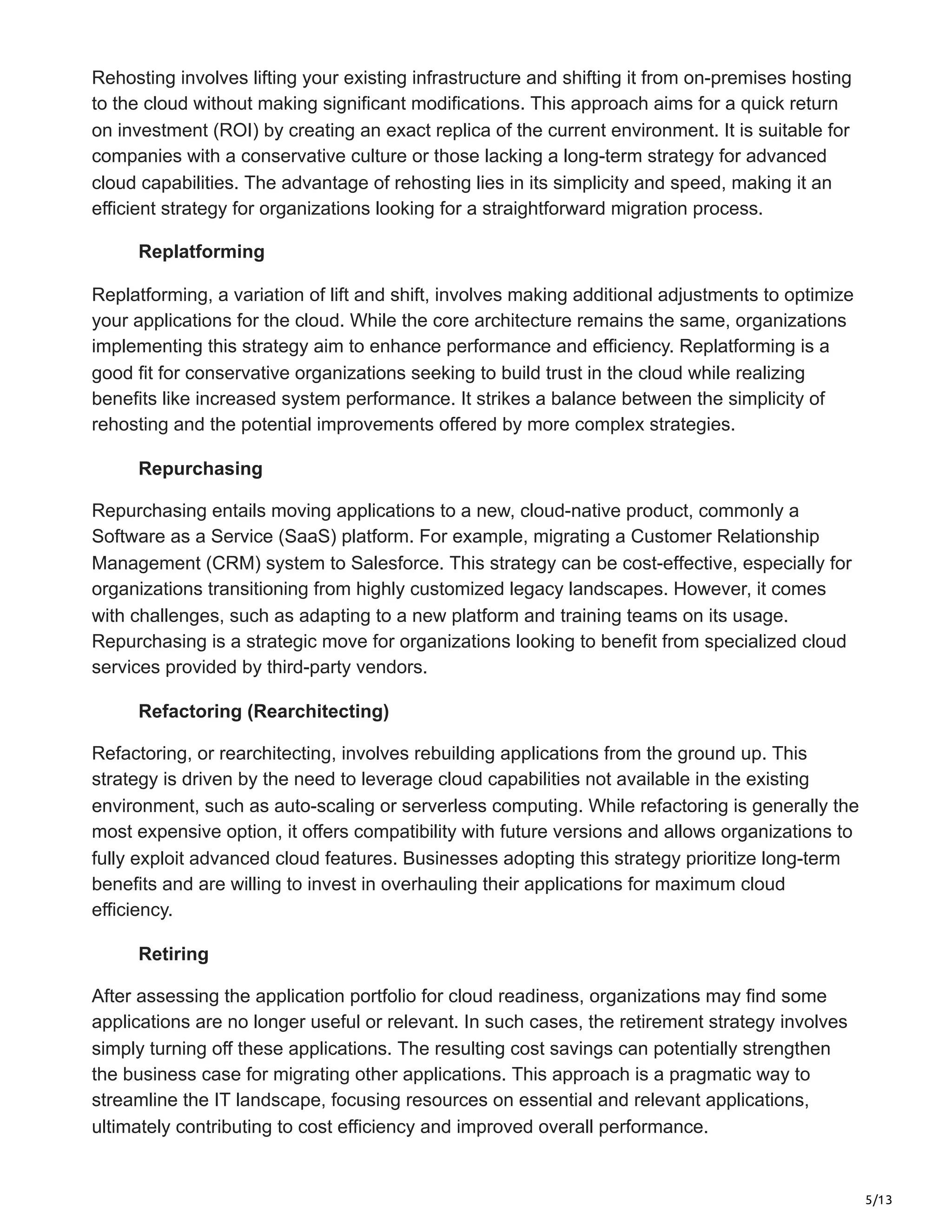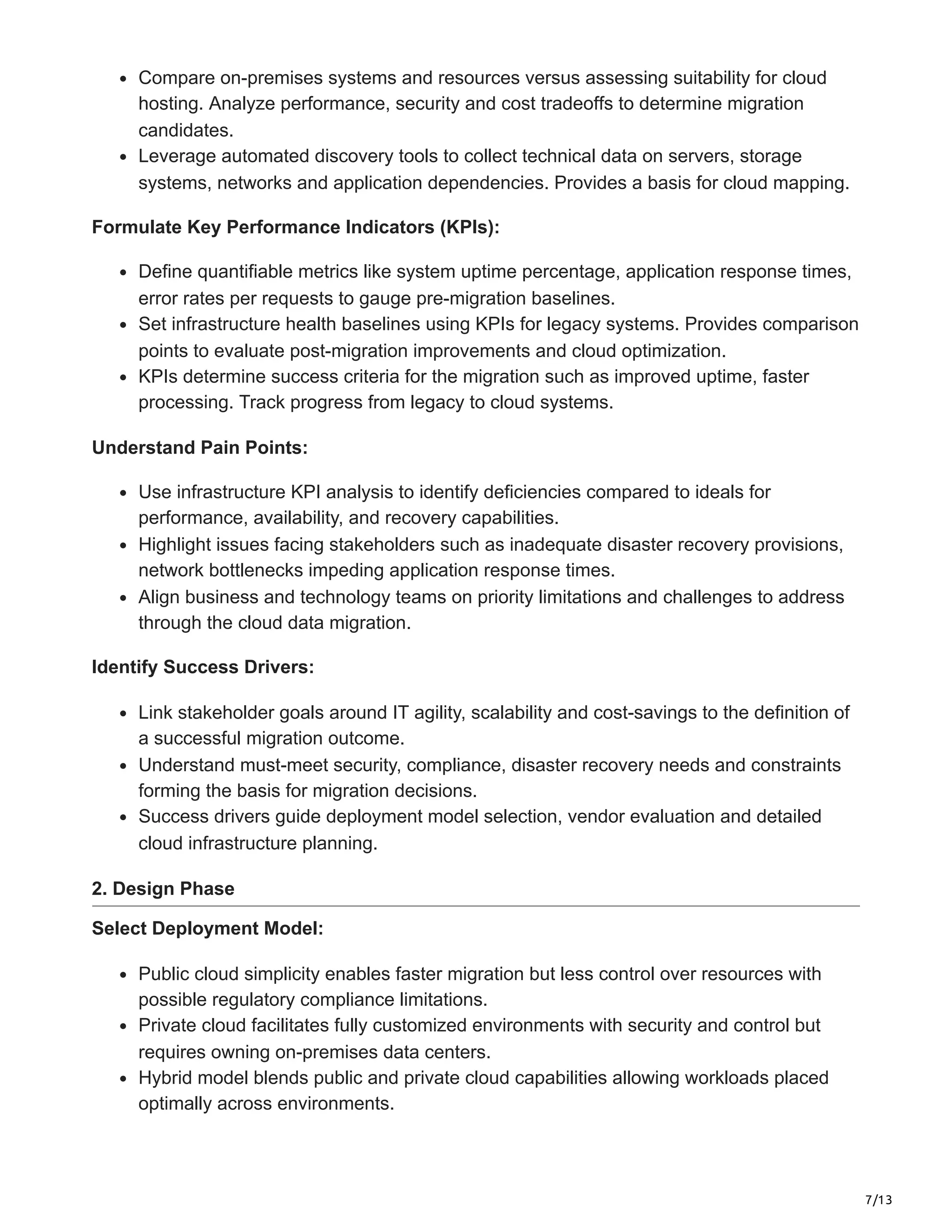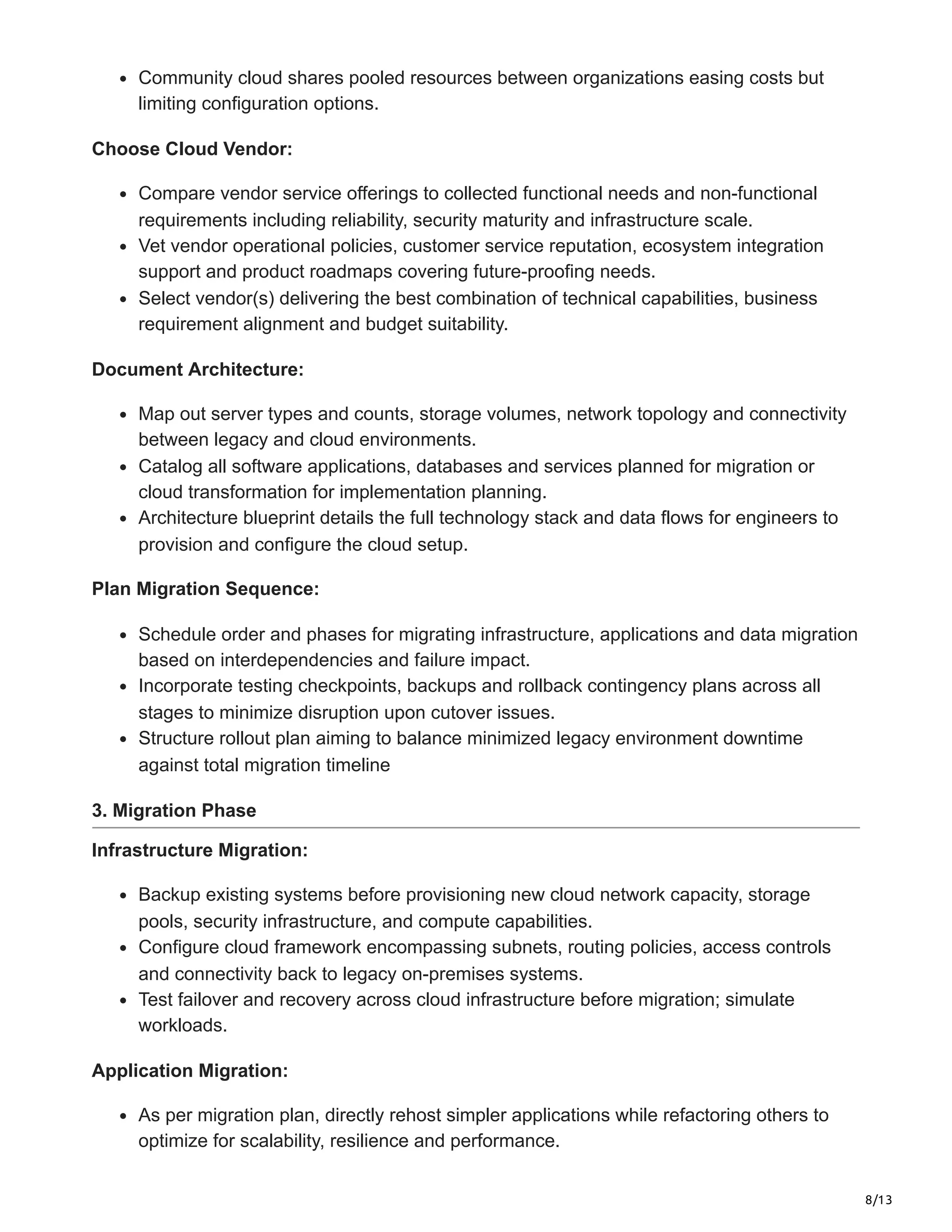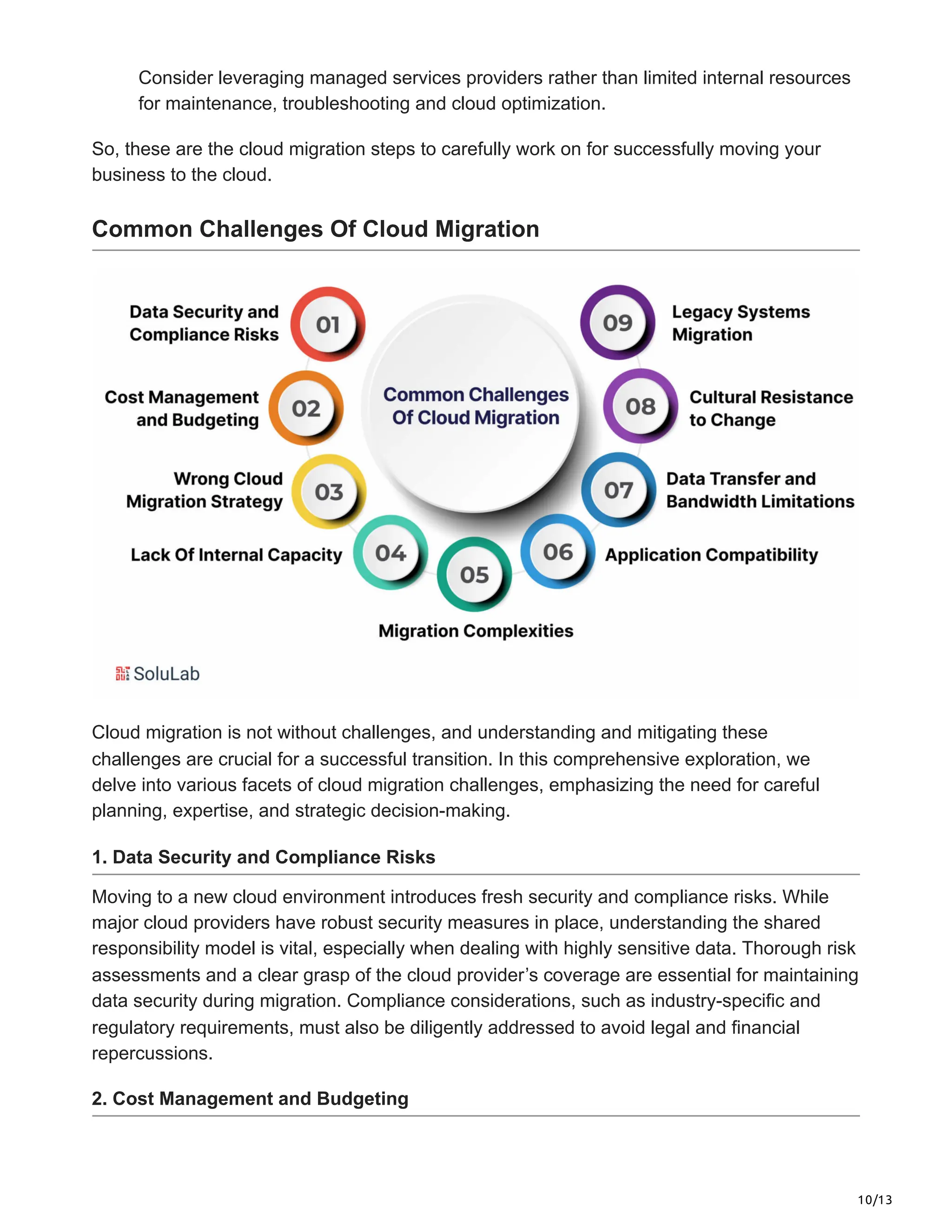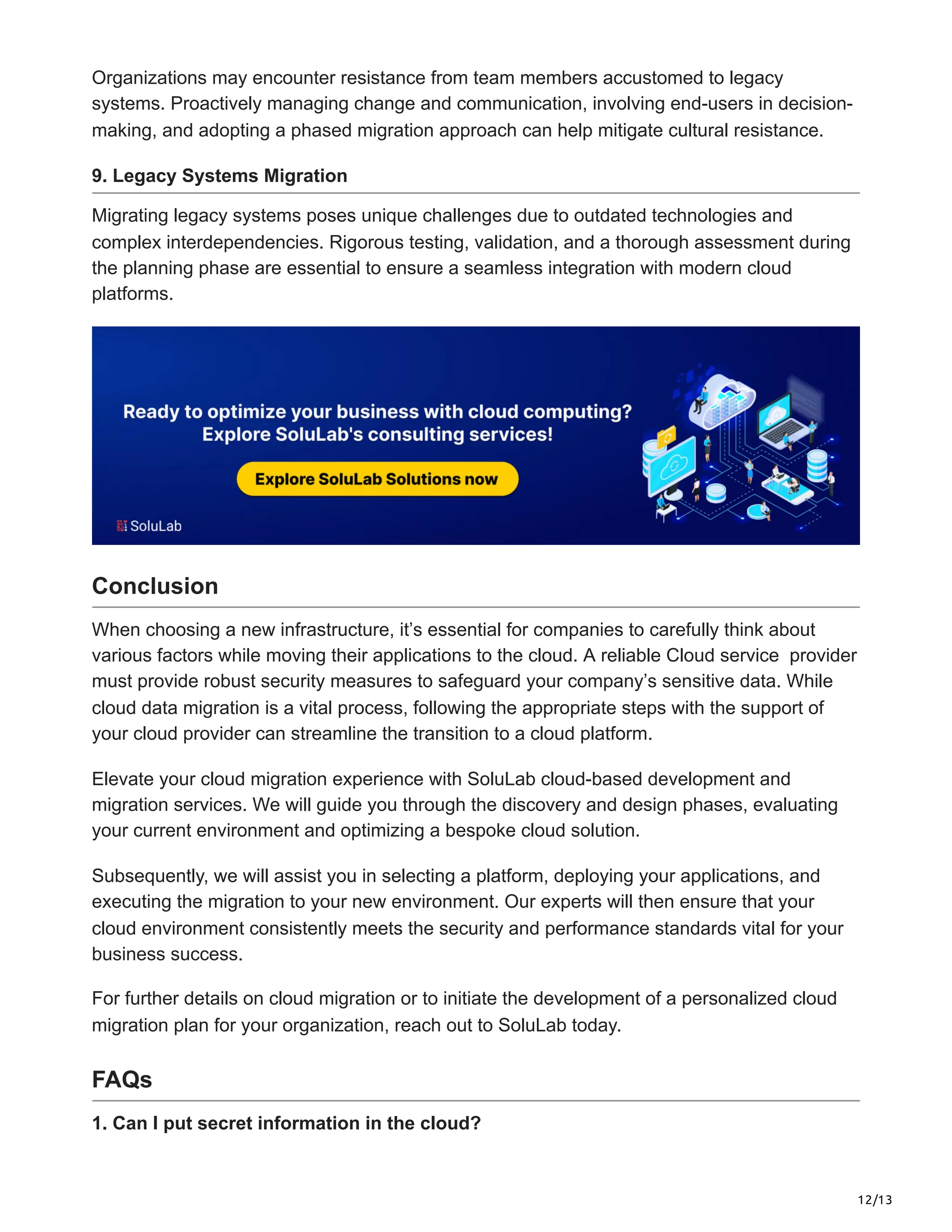The document discusses key considerations for migrating a business to the cloud. It covers potential benefits like improved performance, faster innovation, enhanced resilience and security. It also discusses important factors to consider like choosing the right cloud platform, budgeting, data security and common challenges. The cloud migration process involves discovery, design, migration, going live and ongoing support phases. Different migration strategies like rehosting, replatforming, repurchasing, refactoring, retiring and retaining are also outlined.

